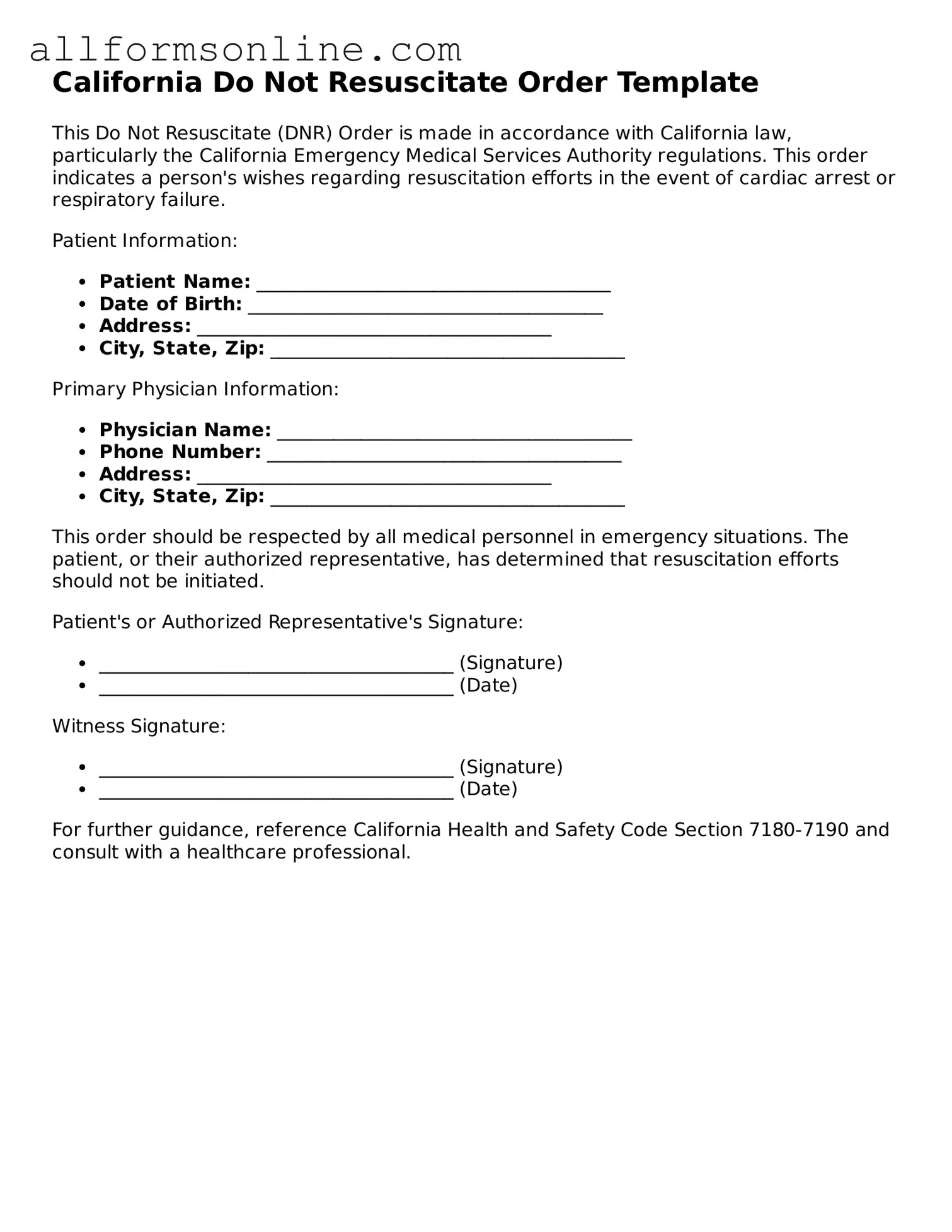What is a California Do Not Resuscitate Order (DNR) form?
A California Do Not Resuscitate Order (DNR) form is a legal document that allows a person to refuse resuscitation in the event of a medical emergency. This means that if a person’s heart stops beating or they stop breathing, medical personnel will not perform CPR or other life-saving measures. The DNR form reflects the individual’s wishes regarding end-of-life care and is an important part of advance healthcare planning.
Who can complete a DNR form in California?
In California, any adult who is capable of making their own healthcare decisions can complete a DNR form. This includes individuals who are 18 years or older. If a person is unable to make decisions for themselves, a legally authorized representative, such as a healthcare proxy or a family member, may complete the form on their behalf. It is essential that the individual understands the implications of the DNR order before signing.
How do I obtain a DNR form in California?
You can obtain a California DNR form from various sources. Hospitals, healthcare providers, and hospice organizations typically have copies available. Additionally, the California Department of Public Health provides the form on its website. It is important to ensure that you are using the most current version of the form, as regulations may change over time.
What should I do after completing a DNR form?
Once you have completed and signed the DNR form, it is crucial to share copies with your healthcare providers and family members. Keep the original document in a place where it can be easily accessed in case of a medical emergency. It is also advisable to discuss your wishes with your loved ones to ensure they understand your decisions regarding resuscitation and end-of-life care.
